Alexandros Koliousis
GroupBERT: Enhanced Transformer Architecture with Efficient Grouped Structures
Jun 10, 2021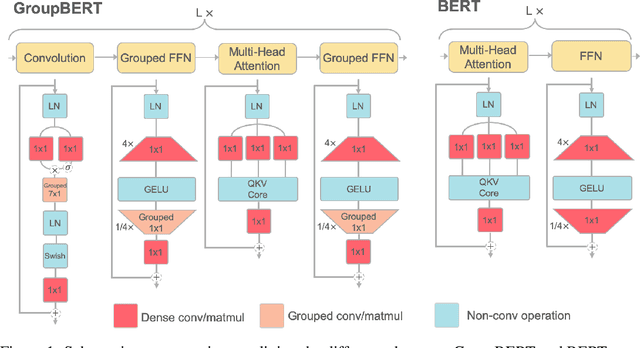
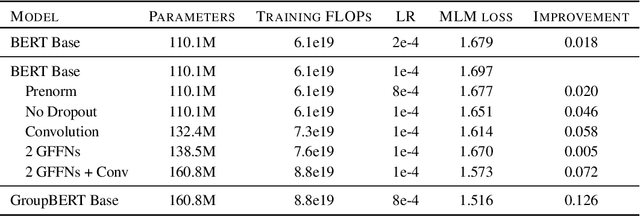
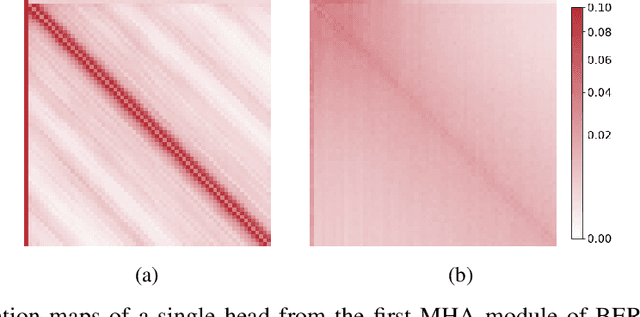

Abstract:Attention based language models have become a critical component in state-of-the-art natural language processing systems. However, these models have significant computational requirements, due to long training times, dense operations and large parameter count. In this work we demonstrate a set of modifications to the structure of a Transformer layer, producing a more efficient architecture. First, we add a convolutional module to complement the self-attention module, decoupling the learning of local and global interactions. Secondly, we rely on grouped transformations to reduce the computational cost of dense feed-forward layers and convolutions, while preserving the expressivity of the model. We apply the resulting architecture to language representation learning and demonstrate its superior performance compared to BERT models of different scales. We further highlight its improved efficiency, both in terms of floating-point operations (FLOPs) and time-to-train.
CROSSBOW: Scaling Deep Learning with Small Batch Sizes on Multi-GPU Servers
Jan 08, 2019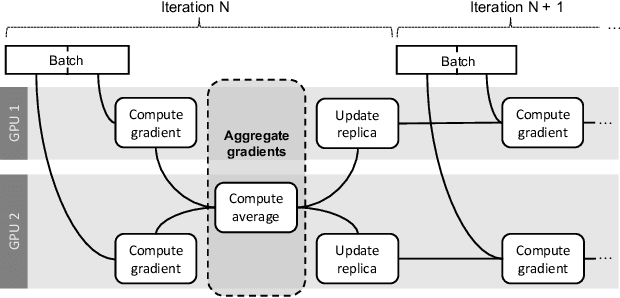


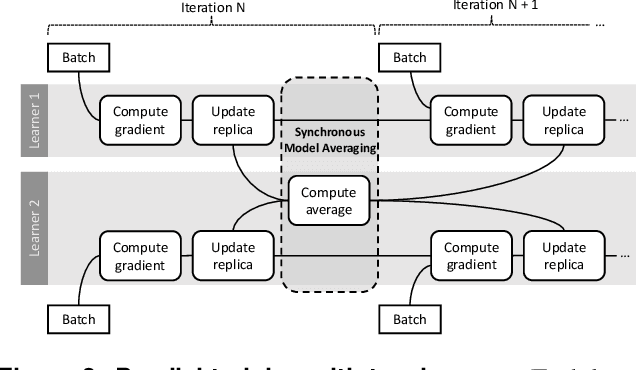
Abstract:Deep learning models are trained on servers with many GPUs, and training must scale with the number of GPUs. Systems such as TensorFlow and Caffe2 train models with parallel synchronous stochastic gradient descent: they process a batch of training data at a time, partitioned across GPUs, and average the resulting partial gradients to obtain an updated global model. To fully utilise all GPUs, systems must increase the batch size, which hinders statistical efficiency. Users tune hyper-parameters such as the learning rate to compensate for this, which is complex and model-specific. We describe CROSSBOW, a new single-server multi-GPU system for training deep learning models that enables users to freely choose their preferred batch size - however small - while scaling to multiple GPUs. CROSSBOW uses many parallel model replicas and avoids reduced statistical efficiency through a new synchronous training method. We introduce SMA, a synchronous variant of model averaging in which replicas independently explore the solution space with gradient descent, but adjust their search synchronously based on the trajectory of a globally-consistent average model. CROSSBOW achieves high hardware efficiency with small batch sizes by potentially training multiple model replicas per GPU, automatically tuning the number of replicas to maximise throughput. Our experiments show that CROSSBOW improves the training time of deep learning models on an 8-GPU server by 1.3-4x compared to TensorFlow.
 Add to Chrome
Add to Chrome Add to Firefox
Add to Firefox Add to Edge
Add to Edge